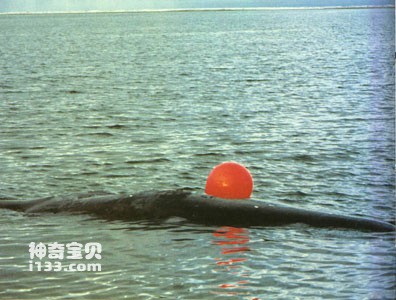The largest animal on land is the elephant, while the largest animal in the ocean is the whale. Perhaps it is because the ocean is much larger than the land, so whales are many times larger than Elephants-Are-Endangered.html">elephants. Perhaps this can be called a scale effect. Therefore, cetaceans are also the largest animals on earth today.
There are more than 90 kinds of animals belonging to the order Cetaceans on the earth, which is really a big family. But the so-called whale is not actually a real fish, but a fish-shaped vertebrate belonging to the class Mammalia and the order Cetacea. More than 50 million years ago, the ancestors of modern whales left the land and entered the vast ocean. After a long period of time, they gradually evolved into what they are today, spreading throughout the world's oceans.

Modern whales have highly streamlined bodies that facilitate swimming and reduce water resistance. Therefore, no matter the weather is calm, the wind is roaring, or the waves are rough, they still look calm, as if they are strolling in a garden. The whale's body is hairless, and the smooth skin forms a slippery surface, which can also reduce the resistance of water when moving forward; the forelimbs degenerate into flippers, the hind limbs degenerate, and the tail is arranged horizontally (horizontal caudal fin), which is unique for this type of marine vertebrates Special feature.
Another characteristic of whales is that their external nostrils are located on the back of the head, forming blowholes. On the rippling blue ocean, you can often see tall, feathery water columns and droplets, like wisps of fountains, which are very spectacular. The whale's internal nostrils open into its throat, so it can safely swallow food in the water without choking. The lungs have great flexibility and capacity and can inhale a large amount of air at one time, so whales can stay underwater for a long time, and some can dive into very deep seas.
Whales are warm-blooded animals, and their body temperature is always maintained at around 37°C, which is similar to human body temperature. However, the sea water is cold, especially in the Arctic, where the water temperature is often below zero. Moreover, water absorbs heat much faster than air, so whales have a thick spongy cortex and a thick layer of fat below the cortex as an insulating layer to ensure that body heat is lost as little as possible. In addition, since the resistance of water is much greater than that of air, whales require more energy and physical strength to move. Of course, there are disadvantages as well as advantages. Because there is abundant food in the sea and few competitors, it is easier to fill up your belly. And, perhaps more importantly, although seawater has great resistance, it also has great buoyancy. Huge creatures like whales, which are tens of meters long and weigh more than 100 tons, cannot survive on land no matter what. When it comes to finding food, even moving around is extremely difficult, making it difficult to move even an inch. Therefore, whales provide obese people with a way to live without losing weight, that is, return to the water to live!
animal tags: whale
We created this article in conjunction with AI technology, then made sure it was fact-checked and edited by a Animals Top editor.